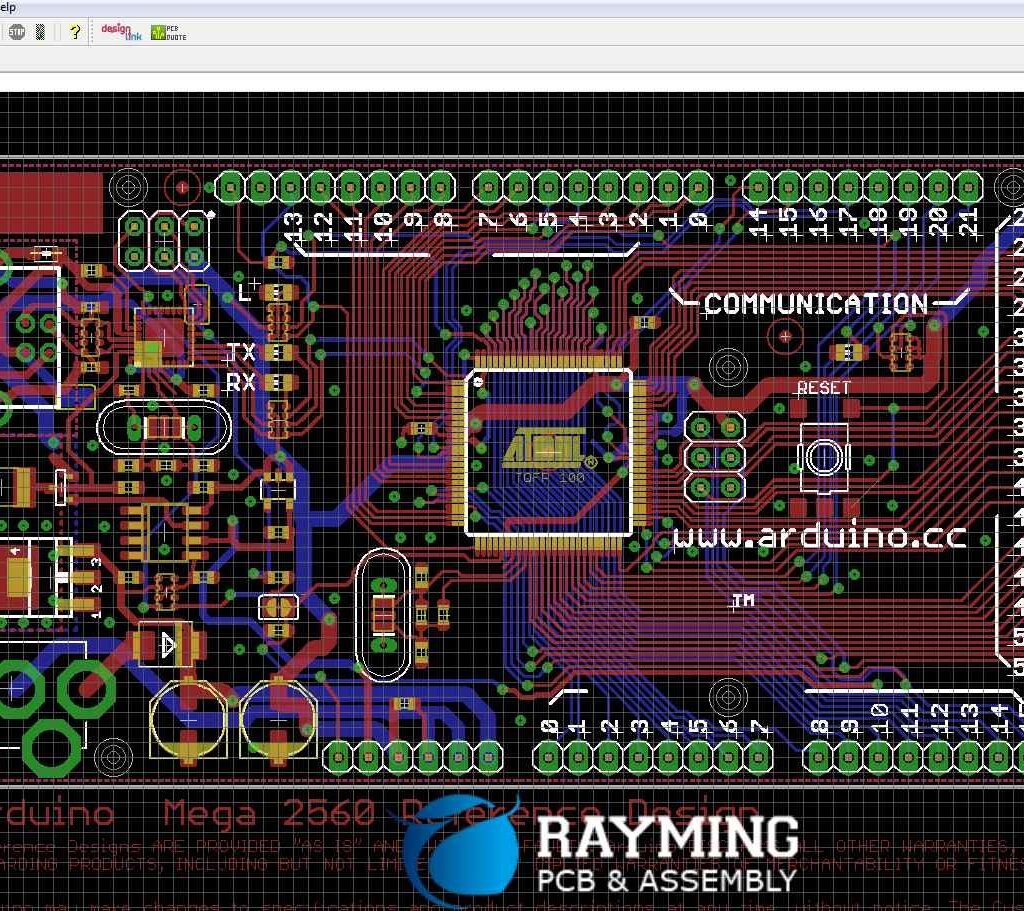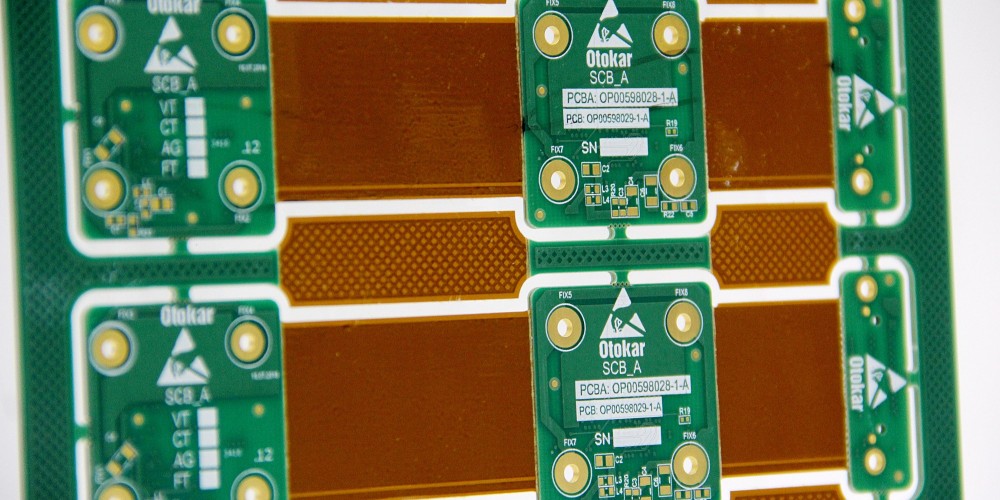Which free PCB design software is the best?
Introduction
Printed circuit board (PCB) design software allows engineers to lay out and route printed circuit boards. With PCB design software, users can design complex circuit boards with advanced features like high-speed interfaces, rigid-flex boards, and integrated circuits. Choosing the right PCB design software is critical for an efficient design workflow.
While advanced commercial tools like Altium Designer, Cadence Allegro, and Mentor Graphics Xpedition dominate the PCB design software market, there are also several capable free and open-source options available. Free PCB design tools have improved tremendously over the years and can deliver professional-grade results, especially for hobbyists and academics.

This article compares the most popular free PCB design packages on the market based on features, usability, capabilities, file formats, and community support. We also provide tips for selecting between them. Read on to determine which free PCB design software best fits your needs.
Comparison criteria
We evaluate the leading free PCB design tools against criteria critical for both beginner and advanced users:
- Ease of use: How easy is the tool to learn and use effectively? How intuitive is the interface?
- Features: What design features are supported? Including layer counts, design rules, trace widths, 3D view, etc.
- Output and file formats: What manufacturing outputs can be generated? Including Gerber, ODB++, DWG, PDF, etc.
- Routing and autorouting: How powerful are manual routing and autorouting capabilities?
- Library: Are component libraries easy to find and integrate? Are they free or paid?
- Import/export: What types of CAD files can be imported and exported? Like schematics, layouts, Gerbers, etc.
- Community support: Is tool documentation thorough and up-to-date? How active are user forums? Is help accessible?
- Licensing: Is the software 100% free to use without restrictions? Or does pricing eventually apply?
Candidates for best free PCB design software
After comparing 12+ free PCB layout tools against these criteria, we narrowed down the options to five high-performing packages that all have outstanding merits. These candidates have amassed large user bases in the hobbyist, academic, and professional communities over the years.
| Software | Initial Release | Operating System | License Type | |-|-|-|-| | KiCad | 1992 | Windows, Mac, Linux | GNU GPLv3 | | EasyEDA | 2012 | Browser-based | Proprietary freemium | | DipTrace | 2002 | Windows, Mac, Linux | Proprietary freemium | | LibrePCB | 2013 | Windows, Mac, Linux | GNU GPLv2 | | PCBWeb | 2021 | Browser-based | Proprietary freemium |
In the sections below, we explore each software package in greater depth against our comparison criteria. We highlight strengths and weaknesses to provide guidance on which options work best for specific use cases and experience levels.
KiCad
Summary: Open-source, cross-platform tool for Windows, Mac, and Linux with a large global user community. Powerful for advanced designs but has a steeper learning curve.
KiCad is one of the most well-established open-source electronics design automation suites on the market. It was originally created by Jean-Pierre Charras in 1992 and has seen active development ever since. Over the years, KiCad has built reliability and brand familiarity across hobbyist, academic, and professional user bases.
Ease of use
KiCad has improved GUI usability over time but still has a steeper learning curve than most commercial tools. New users need to invest time upfront coming up to speed, as workflows can feel unintuitive initially.
KiCad uses separate applications for schematic capture (Eeschema) and PCB layout (Pcbnew), which some users find confusing to navigate between. However, this separation of concerns streamlines more advanced workflows.
KiCad documentation has expanded greatly in recent years thanks to community contributions. There are several active user forums and example tutorials guiding new users.
Overall, KiCad delivers extremely powerful capabilities once mastered, but be prepared for a steeper onboarding process.
Features
KiCad supports advanced PCB designs with the following features:
- Up to 16 copper layers
- Trace widths down to 0.0025 mm
- Panelization
- 3D viewer
- Design rule checking
- Python scripting
- Mixed-mode simulations (SPICE)
- Differential pairs
- Length tuning
- Impedance control
- Rigid-flex boards
These cutting edge functionalities make KiCad suitable for very complex designs from large IoT devices down to integrated circuits.
Output and file formats
KiCad supports generating all necessary manufacturing design files:
- Printouts: SVG, PDF, PS, DXF
- Gerber: RS-274X
- NC drill: Excellon
- 3D models: STEP, VRML, WRL
KiCad also uses open, well-documented file formats for saving native schematics and PCBs, making integration smooth. Import and export options include:
- Netlist: Kicad
- Layout: Kicad PCB
- Schematic: Kicad SCH
Routing and autorouting
KiCad offers both interactive routing and autorouting capabilities. The interactive router is quite basic but gets the job done for simpler designs.
The Pcbnew autorouter uses the open-source FreeRoute engine and can automatically route more complicated designs with some guidance. Autorouting in KiCad works but routes often require cleanup to be manufacturing-ready. Performance varies across designs.
Overall, routing should not pose an issue for beginner and moderately complex boards but expect to manually clean up autorouted boards, especially HDI designs.
Library
KiCad benefits from its vibrant open-source community which contributes libraries and symbols for an extensive component catalog. The built-in library already has 3D models for connectors and components.
Additional repositories like KiPart and KiCAD Library Generator expand options further with models for millions of integrated circuits and other parts. Users can also build their own custom components easily.
Community support
As one of the largest EDA communities, KiCad receives strong forum support and up-to-date documentation from contributors. Many questions around workflows, customization needs, troubleshooting, etc. have already been answered making onboarding easier.
Active maintenance from a global development team keeps KiCad improving. The software sees updates every 1-2 years adding new in-demand features.
Licensing
KiCad is licensed under GNU GPLv3, meaning the software is 100% free to use without restrictions. Users can modify or distribute the source code if desired while benefiting from community contributions back into the mainline tool.
EasyEDA
Summary: Browser-based design tool allowing online access and collaboration. Better for beginners but less suitable for advanced projects.
EasyEDA launched in 2012 as one of the first browser-based PCB design suites removing software installation requirements. The tool is built on HTML5 and leverages the computing power of web browsers for editing schematics and layouts online.
EasyEDA lowers barriers for casual hobbyists to start designing simple circuit boards without investing time into a complex desktop tool. Users can signup for free and start building boards in minutes straight from Chrome, Firefox, etc.
While more constrained for professional use cases, EasyEDA delivers a smooth user experience for beginners. Routing is also automated eliminating the learning curve of manual PCB layout and tuning design rules.
Ease of use
The EasyEDA interface has been designed ground-up for simplicity allowing new users to quickly grasp basic editor functions. Common actions like placing components, wiring connections, and generating manufacturing files use intuitive controls similar to mainstream office software.
EasyEDA also streamlines collaboration through built-in version control, editable design documentation, and public sharing options to embed projects.
The tradeoff is that more complex commands do become challenging as users attempt higher density boards not originally envisioned for the online tool. But for getting started, EasyEDA has done an admirable job keeping the UI clean and recognizable.
Features
EasyEDA offers just enough features for simple hobbyist boards:
- 2-layer boards
- Limited design rules configuration
- 0.8 mm trace size
- 0.4 mm clearance
- 1 oz copper weight
- Simple shapes
- Panelization
- Basic 3D viewer
- Gerber and drill file outputs
These building blocks enable basic board fabrication but will struggle for systems needing higher densities, integrated circuits, or advanced stackups. EasyEDA aims more for early prototyping and learning.
Output and file formats
To EasyEDA’s credit, the software supports generating all documents required to actually build community boards:
- Printouts: PDF
- Gerber: RS-274X
- NC Drill
- BOM generation
- Pick and place
Unfortunately, proprietary file formats make it difficult to export layout data to other professional tools limiting reuse. But for one-off projects, required outputs are covered.
Routing and autorouting

EasyEDA exclusively relies on automatic routing algorithms under the hood after users complete schematic capture. This allows beginners to skip learning complex PCB layout and tuning while still producing manufacturable results.
The autorouter handles basic layouts well delivering tidy trace paths and isolation on simple designs. However, the algorithms do struggle on dense or high-speed topologies better suited for manual tuning. EasyEDA is geared more towards hobbyist and learning use cases.
That said, the blackbox autorouting vastly reduces the ramp time for new users. Novices can still iterate using schematic capture without any layout skills which is quite empowering.
Library
EasyEDA comes preloaded with a decent starting component library containing common parts like resistors, capacitors, regulators, transistors, connectors etc. Additional parts are available for free through external sources to supplement further.
The editor also allows users to build custom components and symbols using editors tailored for beginners. The web libraries continue growing supporting more complex schematics over time.
Community support
Given EasyEDA is designed specifically for first timers, the tool offers several channels for beginners to find assistance as they learn. These include documentation, tutorials, videos, forums, blog articles addressing common issues users face.
EasyEDA also fosters public sharing of designs allowing new users to reference previous projects. The community options ease onboarding pains making the tool more approachable.
Licensing
EasyEDA is offered under a proprietary freemium model. Anyone can signup to access the free versions supporting smaller board sizes and limited features.
Paid plans then unlock additional capabilities like increased board area, private version control, more storage, and priority support. EasyEDA targets hobbyists first but charges professionals requiring commercial-grade outputs.
This balance makes the tool widely accessible for beginners without undermining commercial viability. But advanced users may need to pay or transition elsewhere.
DipTrace
Summary: Downloadable PCB design tool for Windows, Mac, and Linux balancing usability and capabilities for hobbyists. More manual workflows than EasyEDA.
DipTrace dates back to 2001 as a standalone PCB design tool running natively on desktop operating systems. While less modern looking than browser-based alternatives, DipTrace delivers professional outputs rivaling expensive suites once mastered.
DipTrace strikes a practical balance between the ease of use craved by hobbyists yet expansion potential sought by engineers designing complex boards. Workflows guide users appropriately as needs scale upward.
Today, DipTrace garners widespread use across DIY electronics and open hardware communities. The tool generates over 500,000 PCB designs monthly demonstrating mainstream adoption.
Ease of use
DipTrace offers separate modules for schematic capture and PCB layout enabling staged learning even as boards grow more sophisticated. Work can be passed logically between editors as beginners grasp individual concepts.
The interface looks rather dated but uses consistent interactions and visual cues making navigation straightforward. Core actions like component/track placement, selection, grouping, etc. follow expected paradigms. Common EDA capabilities become quickly accessible after initial tool exploration.
Usability is clearly not as polished as browser-based apps but avoids being intimidating either. DipTrace delivers practical results as users expand knowledge at reasonable pace.
Features
DipTrace supports more advanced designs than entry-level tools but cannot match capabilities meant for integrated circuits and high-density systems. Feature highlights include:
- Up to 16 copper layers
- 0.0008 in trace size and spacing
- Blind and buried vias
- Component pad shapes
- Thermal relief connections
- Plane layers
- Simple 3D previews
- Export STEP models
These features allow considerable flexibility designing complex boards before hitting limitations. DipTrace navigates the crossroads between hobbyist and professional well.
Output and file formats
To generate physical PCBs, DipTrace supports:
- Printouts: PDF
- Gerber RS-247X and RS-274D
- NC drill files
- IPC netlists
Native file formats can also import into various DipTrace modules enabling easier toolchain integration.
- Schematic: DSCH
- PCB Layout: DPCB
- Forward annotate changes
Common outputs for manufacturing and documentation are covered as users scale up board complexity.
Routing and autorouting
DipTrace supports both manual routing and autorouting at quality suitable even for advanced boards headed to production. This empowers users of all levels.
Novices can stick to automated routing which handles tricky constraints well out the gate. Control over individual trace paths then becomes optional rather than prerequisite.
For more demanding signal integrity needs, DipTrace allows engineers to manually tune individual traces. constraints well out the gate. Control over individual trace paths then becomes optional rather than prerequisite.
For more demanding signal integrity needs, DipTrace allows engineers to manually tune individual traces. Length matching, RF design, impedance control, etc. unlocks higher performance boards.
Having both options covered makes DipTrace versatile spanning beginner to advanced use cases. Users simply enable desired features as abilities progress.
Library
DipTrace provides a built-in component library containing over 80,000 schematic symbols and PCB footprints for common parts. Model counts continue growing giving users ample baseline blocks.
The editor also permits generating custom libraries for missing pieces. Any unique components can be created from scratch and reused later as needed.
There are additionally online repositories with hundreds of thousands of supplementary DipTrace library elements curated by the user community. Between native and external contributions, sourcing component models is straightforward.
Community support
DipTrace fosters an active user community through forums, documentation, blog articles, and videos assisting both beginners and experts. Questions around modifying default settings, interface usage, best practices etc. all receive knowledgeable responses.
The developers also share detailed roadmaps on upcoming capabilities informing the community. Users can preview how the tool evolves across PCB, schematic, and autorouter modules before enhancements release. This tight feedback loop keeps improvement aligned with user needs.
Licensing
DipTrace offers a proprietary freemium model with batch export capabilities unlocked for free accounts. This grants hobbyists and engineers access to all features necessary for actual board fabrication without restrictions.
Paid tiers then add more storage space, larger board sizes, custom features, priority support and library access granting headroom for advanced use cases. Commercial users essentially sponsor tool development in a sustainable win-win approach.
LibrePCB
Summary: Open-source EDA suite focusing on usability first while meeting hardware needs of hobbyists and startup companies. Intuitive interface with growing capabilities.
LibrePCB launched in 2013 as an open-source EDA project prioritizing usability specifically for prototyping, hobby design, and firmware development. The goal was enabling professionals builders outside large enterprises to access quality PCB software.
Today, LibrePCB offers an easy-to-learn GUI combined with everyday features useful for makers and startups designing IoT devices, robotics systems, electronics hardware etc. LibrePCB strikes a balance between simplicity and functionality for entrepreneurs with limited resources.
Ease of use
LibrePCB invested deeply in UI/UX design ensuring the tool feels natural to new users from first login. Creating schematics and layouts adopts interactions, naming conventions, architecture parallel to conventional office suites. Documentation is cleanly presented as well.
Novice designers require minimal ramp time before contributing boards thanks to the intuitive metaphors. At a minimum, LibrePCB removes software hurdles letting makers focus purely on circuits and mechanics.
Advanced users still gain efficiency from the well-organized interface even when exercising more complex tool capabilities. LibrePCB考eases rather than overwhelms.
Features
LibrePCB supports everyday features needed for prototyping and production at startups:
- 2-layer through 6-layer boards
- 0.12 mm traces and spacing
- DRC checks
- 3D board visualization
- MCAD file export
- Basic library manager
- Design reuse and variants
- Decent autorouter
While less extensive than KiCad, LibrePCB delivers practical building blocks for real hardware development rather than margin cases. The tool enables moving ideas to functional devices quickly.
Output and file formats
To build boards, LibrePCB generates:
- Printouts: PDF
- Gerbers: RS-274X
- NC drill files
- BOM files
LibrePCB also provides well-documented save/export options to transition files elsewhere:
- Schematics can import and export using open XML
- Layout data also supports XML
- Forward/back annotation
This interoperability lets LibrePCB fit cleanly in complex toolchains.
Routing and autorouting
LibrePCB has an auto-router for efficiently connecting traces based on configurable design rules and constraints. The engine generally handles basic board layouts well without intervention.
Users also have




